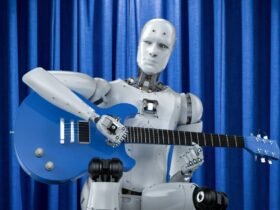At the Gartner IT Symposium/Xpo, analysts Gene Alvarez and Tori Paulman outline what will be top of mind for enterprises in the next few years.
In a “year filled with chaos,” Gartner analysts Gene Alvarez and Tori Paulman argue that businesses need three things: an architect to help with AI platforms and infrastructure; a synthesist who will help with AI applications and architectures; and a vanguard who will help with security, trust, and governance. All will face eight big strategic trends in the coming year, which Alvarez and Paulman outlined at this year’s Gartner IT Symposium/Xpo 2026 conference.
1. AI-Native Development Platforms
The first trend is developing software when AI is a member of your team, Alvarez said. AI can ease the developer-productivity problem because they create software faster than their human counterparts. To make this work, you’ll need platform teams, security guardrails, and an AI-first mindset, Alvarez said. This should be mature in less than five years.
2. AI Supercomputing Platforms
These are systems built for large-scale AI workloads. They combine accelerators, orchestration, and high-speed infrastructure to help developers create applications in real-time. Paulman said these systems can boost speed, efficiency and cost savings, so they can accelerate innovation and future-proof AI. They suggested that organizations need to identify high-impact compute cases, and that upskilling is just as important. This should be mature in three to five years.
3. Multiagent Systems
Three of the trends deal with the synthesist. Alvarez talked about having a modular architecture for multiple AI agents handling complex workloads, comparing individual agents to the different members of an F1 racing team. He said we’ll first see these work on single platforms, then cross-platform (using MCP or A2A), and maybe later on an “internet of agents.” Organizations should start small now with specific agents, according to Alvarez, who cautioned us not to think of them as people, but as tools that work alongside humans. This should be mature in less than three years.
4. Domain-Specific Language Models
Rather than general-purpose large language models (LLMs), Paulman talked about the advantages of domain-specific language models (DSLMs) that are specifically focused on the tasks you need to do, such as clinical studies in healthcare. They noted that there were 50,000 such studies done in the past year, and it would take 350 people all year to read them. A DSLM could search through them quickly giving, yielding better results.
“CIOs are sitting on a value goal mine,” Paulman said, because you have the ability to build DSLMs as a digital service. The important thing, they said, is to be transparent about what the model does and doesn’t know. This will require a context engineer to ensure the data up to data and a machine learning specialist who monitors for catastrophic forgetting. This should be mature in 3-5 years.





Leave a Reply